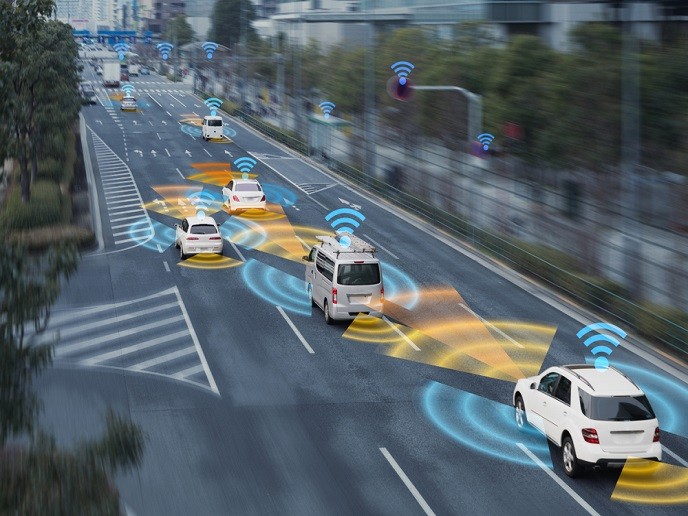Improved geolocation for autonomous vehicles
There is no doubt that the emergence of CAVs will revolutionise current patterns and modes of transportation. Major investments in the field and the latest advances in artificial intelligence (AI) and sensors means that significant uptake of autonomous driving is expected by 2020, rather than 2035 as previously forecast. CAVs are fitted with an enormous number of sensors, enabling them to understand the driving environment and act accordingly. However, all this technology is meaningless if the location of the vehicle in real time is not known. Thus, global navigation satellite systems (GNSS), like GPS or GALILEO, are used to position a mobile device. To date there is no GNSS solution that meets the stringent requirements of CAV manufacturers. This is partly due to the excessive costs incurred for implementing at scale and partly the inability to provide location updates in real time under difficult GNSS conditions, such as with urban canyons. An additional challenge is the lack of a reliability measure for detecting location accuracy levels. Algorithms provide a software solution The Horizon 2020 ALBORA project addressed these challenges, building and patenting the Albora Correlation Engine (ALCORE). The engine employs AI and biologically-inspired deep learning networks to achieve the required level of performance. The initiative provided high-precision and ultra-low power geolocation technology and solutions for CAVs. “Our technology can be embedded in the electronics currently available on autonomous vehicles, allowing us to keep the costs extremely low, since no additional hardware is required,” says project coordinator Anselm Adams. Researchers developed a software solution for the ALCORE. “This proprietary algorithm combines biologically-inspired architecture with advanced engineering and mathematical techniques that provides our clients with an accurate, fast, safe and reliable location coordinates,” Adams explains. A huge opportunity To better exploit their product, ALBORA will sell licences through a simple to use application programming interface – a software company approach. According to Adams: “This model is highly scalable and will allow us to tackle a huge market opportunity.” In fact, software will comprise the largest market share for CAV, growing from EUR 0.5 billion in 2015 to EUR 25 billion by 2030. “To this end, we need to assess the technical risks of migrating our code to more efficient programming languages, seek industrial partners to perform large pilots and fine-tune our business model using design thinking techniques,” observes Adams. Moreover, ALBORA provides a better understanding of the business side of the CAV sector through a comprehensive analysis of the market. “We believe all car manufacturers can benefit from our technology, which can provide centimetre precision for their CAVs,” Adams concludes.
Keywords
ALBORA, connected and autonomous vehicles (CAV), software, global navigation satellite systems (GNSS), Albora Correlation Engine (ALCORE), artificial intelligence (AI), geolocation



